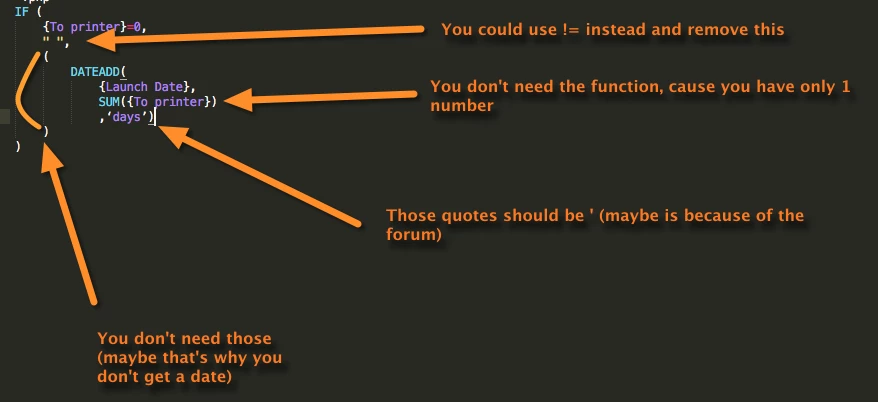Hi.
I’m trying to create a formula that will leave a cell blank if certain qualifications aren’t met and, if they are met, to complete an additional formula and have that answer register as a date and I’m stuck.
More specifically - I am creating a database where I can enter project deadlines and then work back from there to create additional due dates. for example, I have an marketing piece that needs to be launched 10/27/18. I then have 3 other fields that are lookup fields that pull in “lead times” based on the type of marketing piece.

Where I’m running into difficulty is with the subsequent formula fields. Wherever a look up column is a 0 and/or blank, I want the formula field to remain blank, but if there is a number in it, I want it to create a formula that results in a date field. So, for example:
Thanksgiving Cards - Launch date is 11/16/2018. I want to create a “to printer” field that subtracts 4 days from the launch date to create a new “to printer field” that shows a due date of 11/09/18 and leaves the others blank
The formula I’ve been trying is IF ({To printer}=0," ",(DATEADD({Launch Date},SUM({To printer}),‘days’))). It works - but the date field is a long integer and not a formatted date.
When I try to use a date format formula, everything breaks down. Either I end up with dates that aren’t formatted as dates (I think they’re seen as text) or an error.
Can anyone help?
thanks in advance!
Laurel


